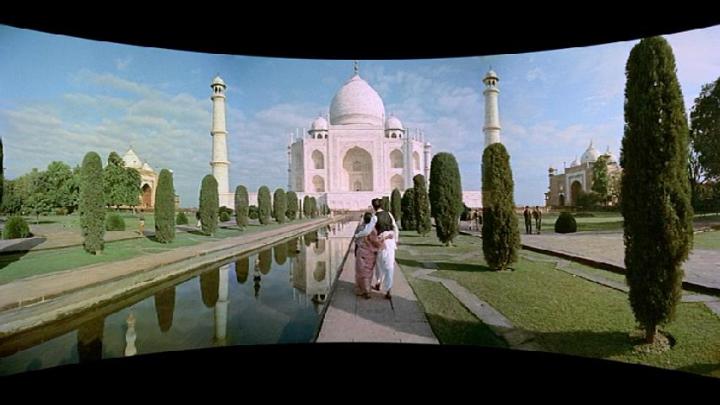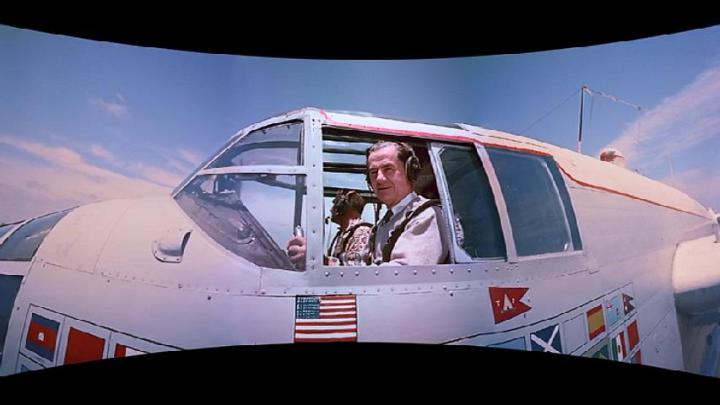The only true Cinerama film I ever saw in the Cinerama format was a re-issue of the original This Is Cinerama (1952). I did see How the West Won, but in regular widescreen at a regular theater. Seeing things like The Sand Pebbles and Grand Prix (both 1966) in their roadshow releases in a Cinerama theater don’t really count. Despite the fact that they were touted as being Cinerama — as were quite a few others, including 2001 (1968) — they were really just 65mm or 70mm widescreen single camera, single projector movies shown on a Cinerama screen. This Is Cinerama was essentially a feature-length demo reel for the process that started with Lowell Thomas explaining it in flat footage as a build-up to him announcing, “This is Cinerama!” At that point, the curtains opened to expose the whole screen in all its curved glory, and the viewer was taken on a roller coaster ride, followed by other sights and scenes that were suited to the awkward format. I guess the effect was — for a lot of people — akin to being one of the viewers who jumped out of the way of the train coming into the station when the Lumiere Brothers projected that in the 19th century.
I was five or six years old when a pair of Cinerama true believers (it was their second or third time) took my parents and me to see this in a theater in Charlotte. (I think it was called the Carolina.) I remember them enthusing over a shot (a Cinerama specialty) of a choir marching down opposite sides of the screen toward the back of the theater — “It’s just like they’re really passing you!” Well, yeah, but they didn’t tell you that the process and the deeply curved screen made their faces all look like a fisheye lens close-up of Lon Chaney’s backside at various points in their journey. Granted, I was a kid and I expected, you know, a story, not “Peeps from Many Lands.” (I haven’t changed much, since my affinity for non-narrative movies is small.) I was mostly bored. That’s pretty much how I felt watching Seven Wonders of the World, which is essentially the same thing with different “peeps.” Admittedly, I can now appreciate the technical mastery of the amazingly smooth traveling shots. (To think that these shots did not influence filmmakers is ridiculous. Such things as the opening of Kubrick’s The Shining or the scene in Ken Russell’s Mahler where he depicts the composer’s mind flying out over the lake and up into the mountains owe much to this — directly or indirectly.) But the experience of the film itself is — at least for me — wearying with its lack of point, its distorted images, its awkward joins, and, in this case, its self-congratulatory outburst of Norman Rockwell Americana.
The Hendersonville Film Society will show Seven Wonders of the World Sunday, Mar. 1, at 2 p.m. in the Smoky Mountain Theater at Lake Pointe Landing Retirement Community (behind Epic Cinemas), 333 Thompson St., Hendersonville.





Which Lon Chaney?
Junior of course.